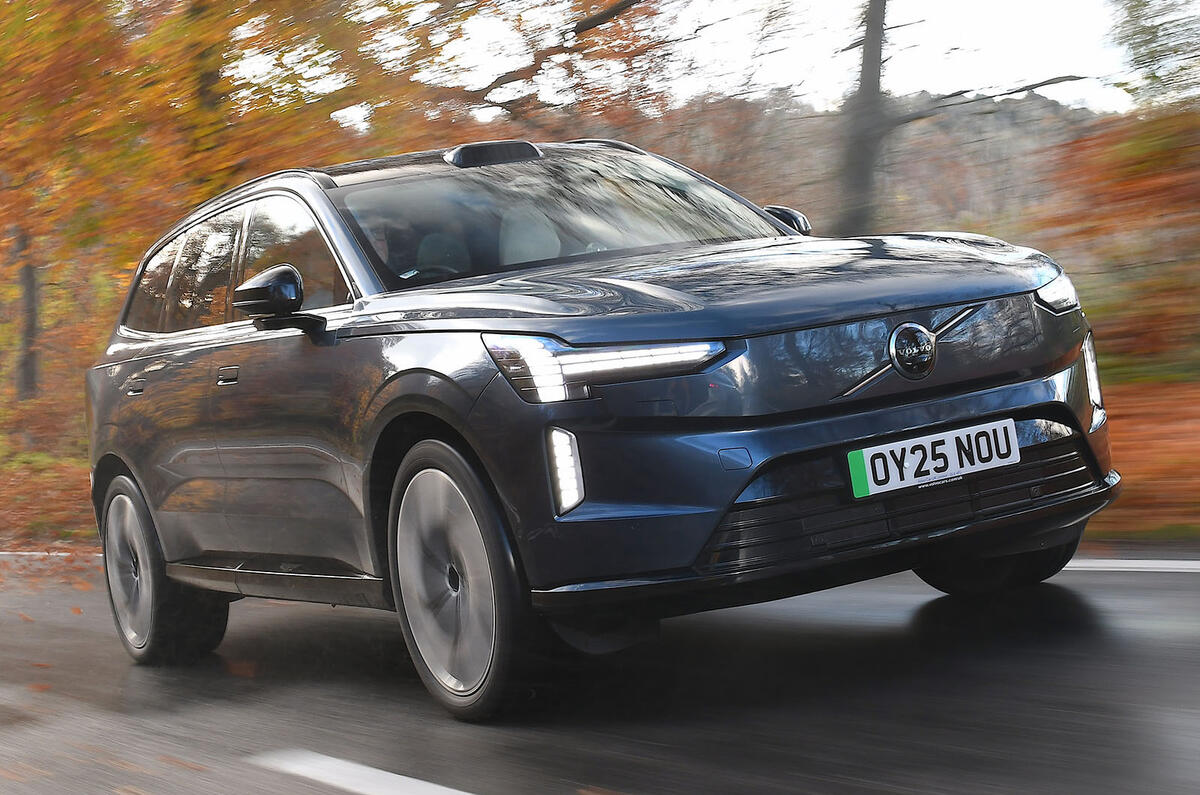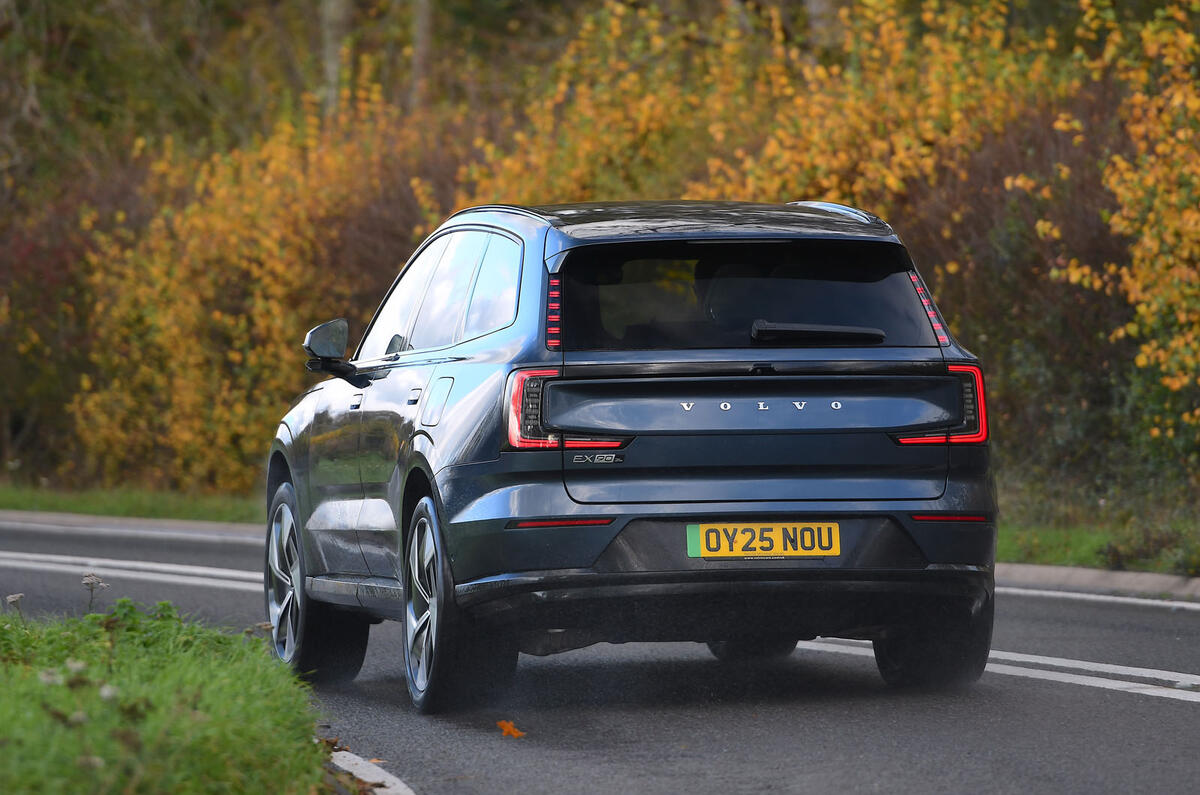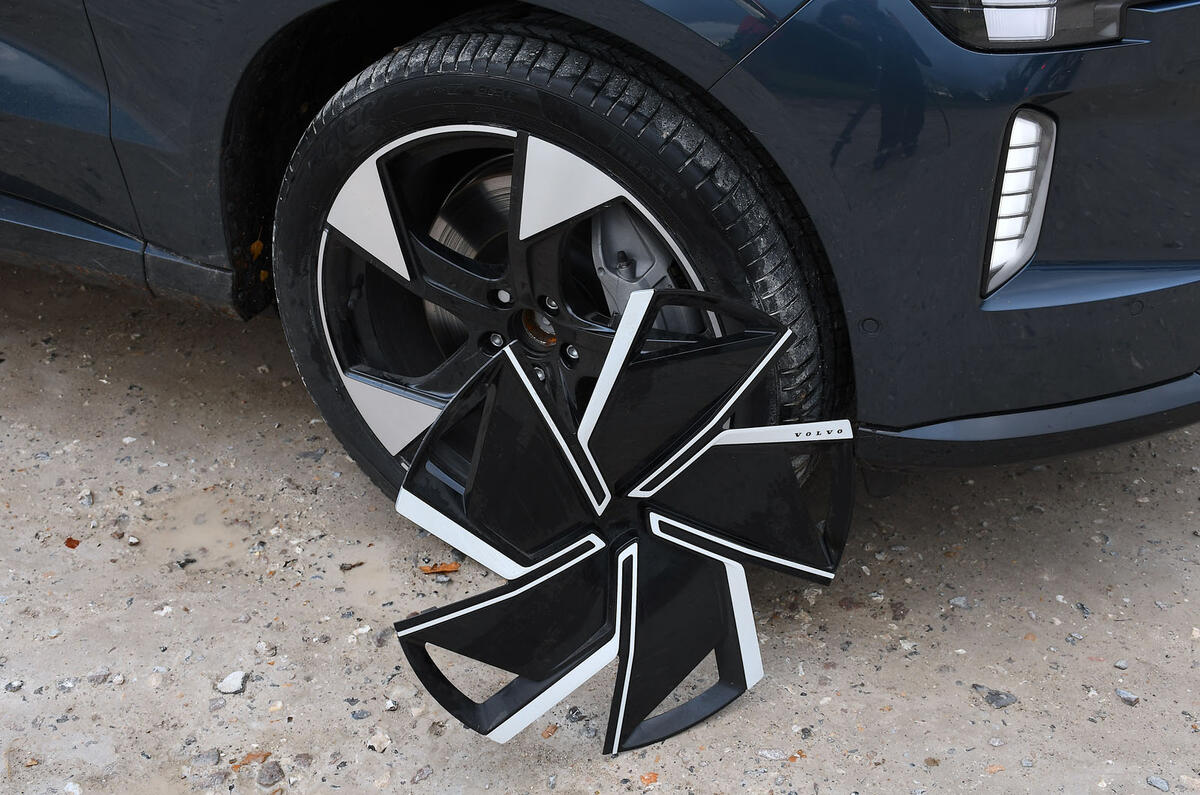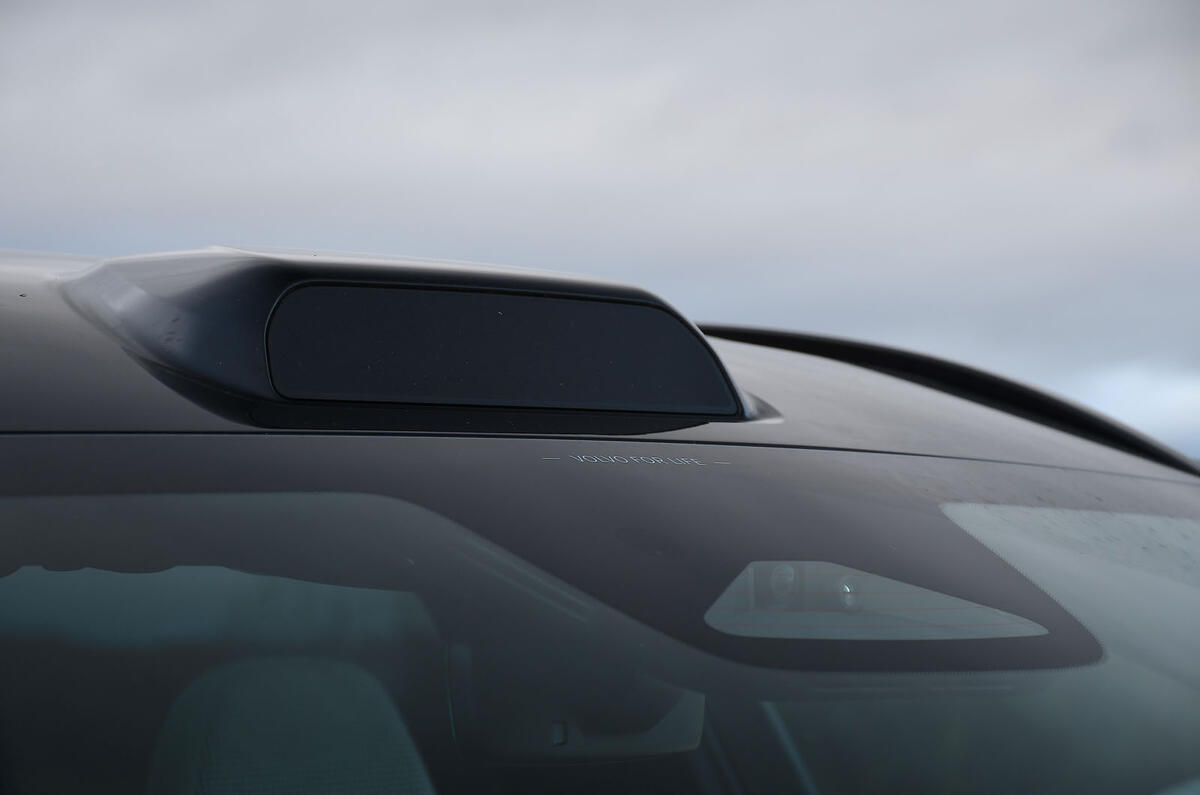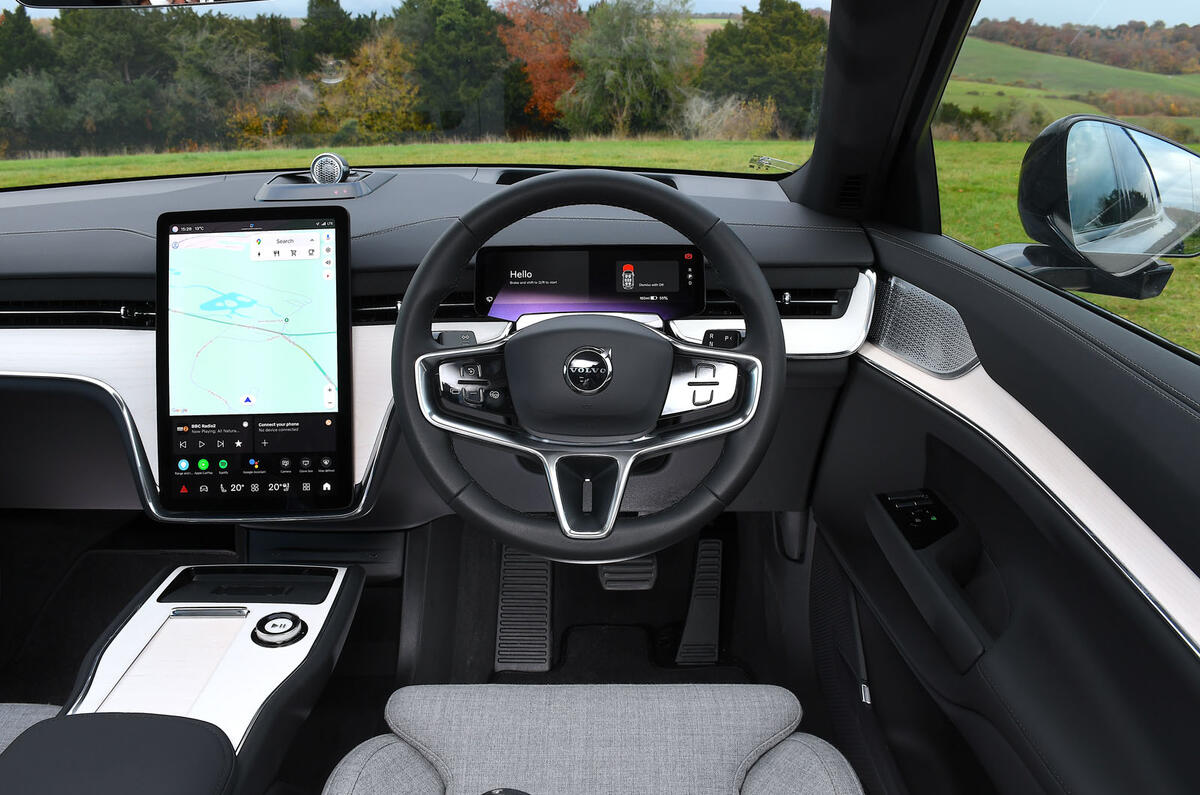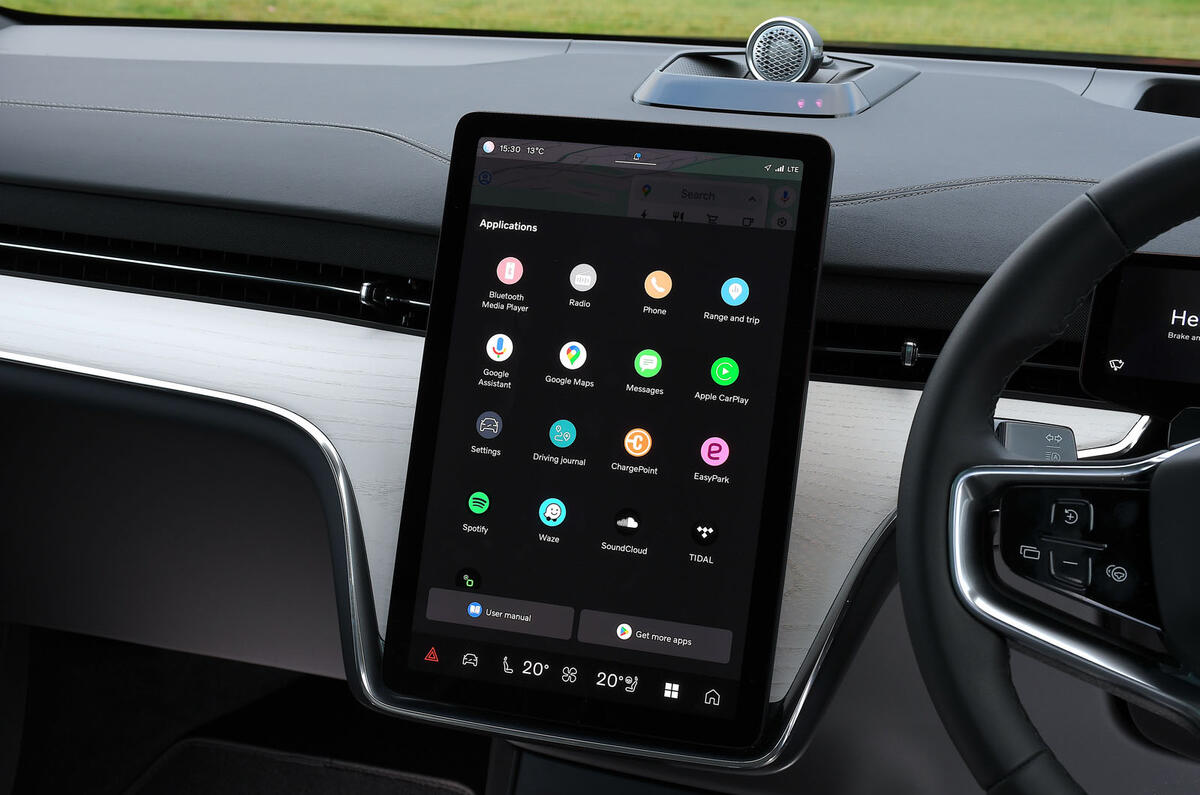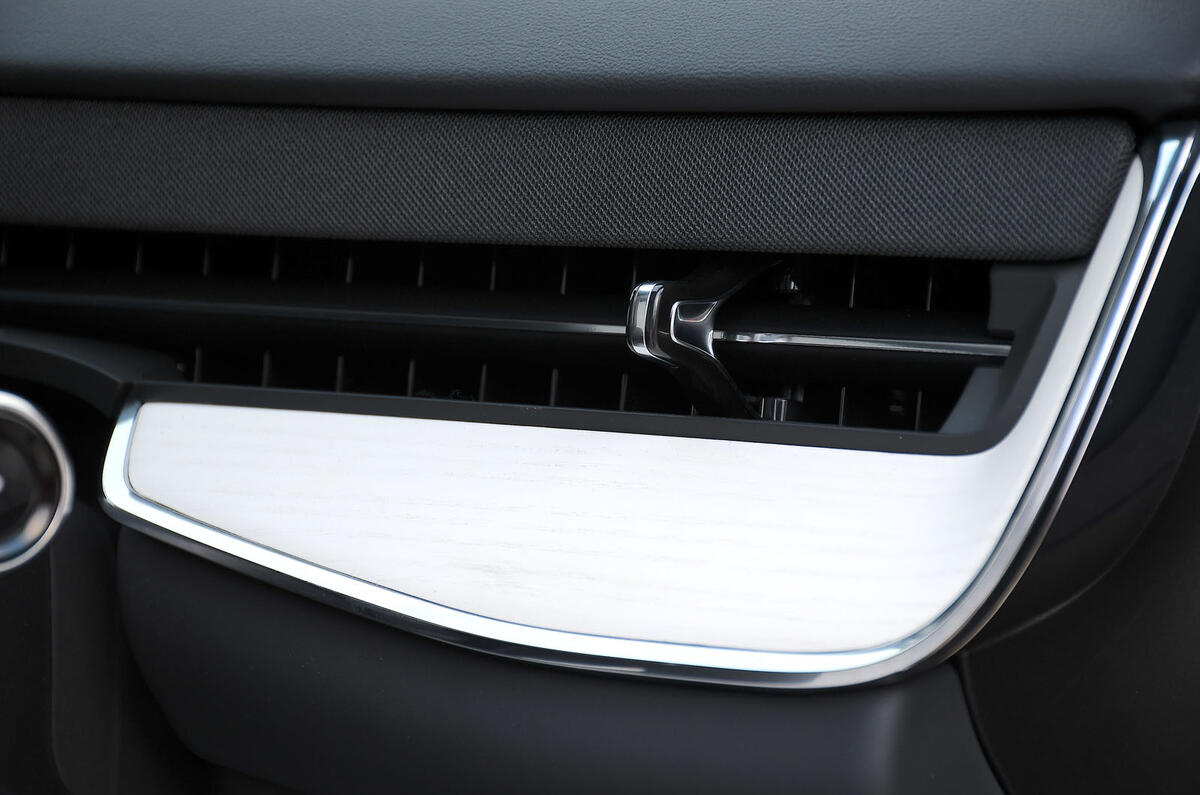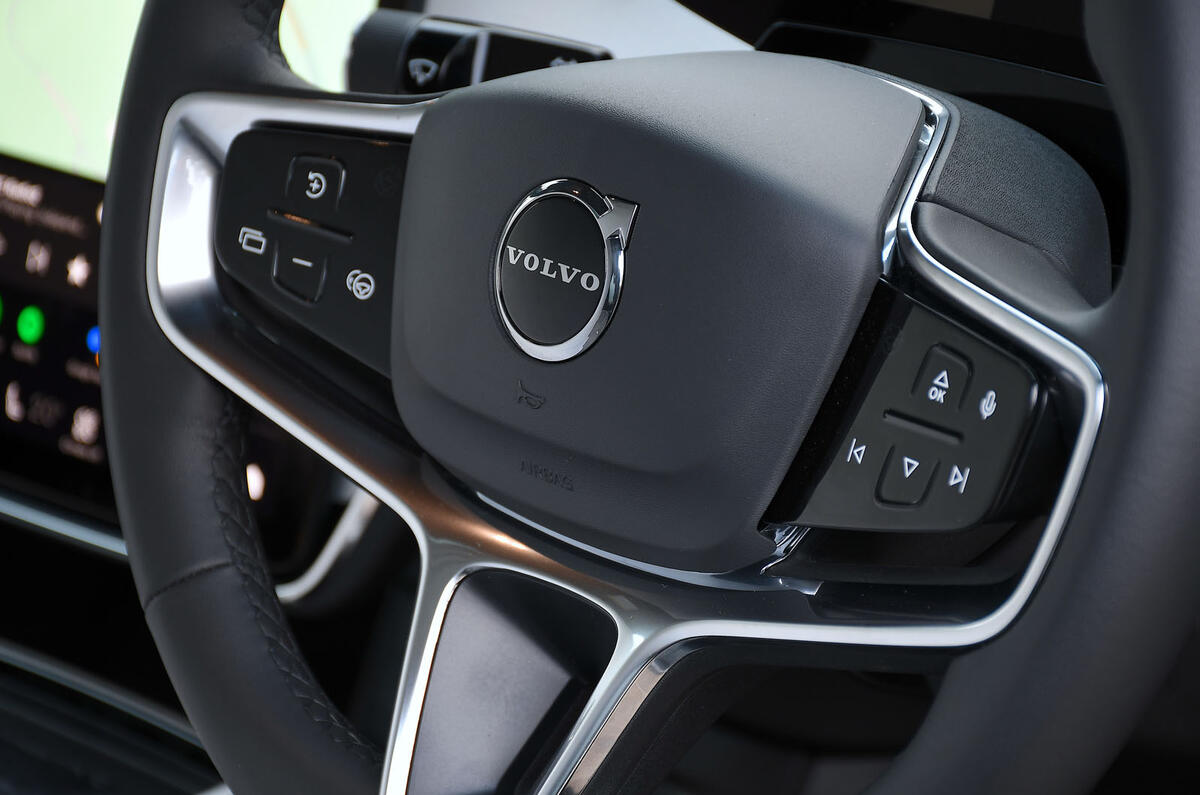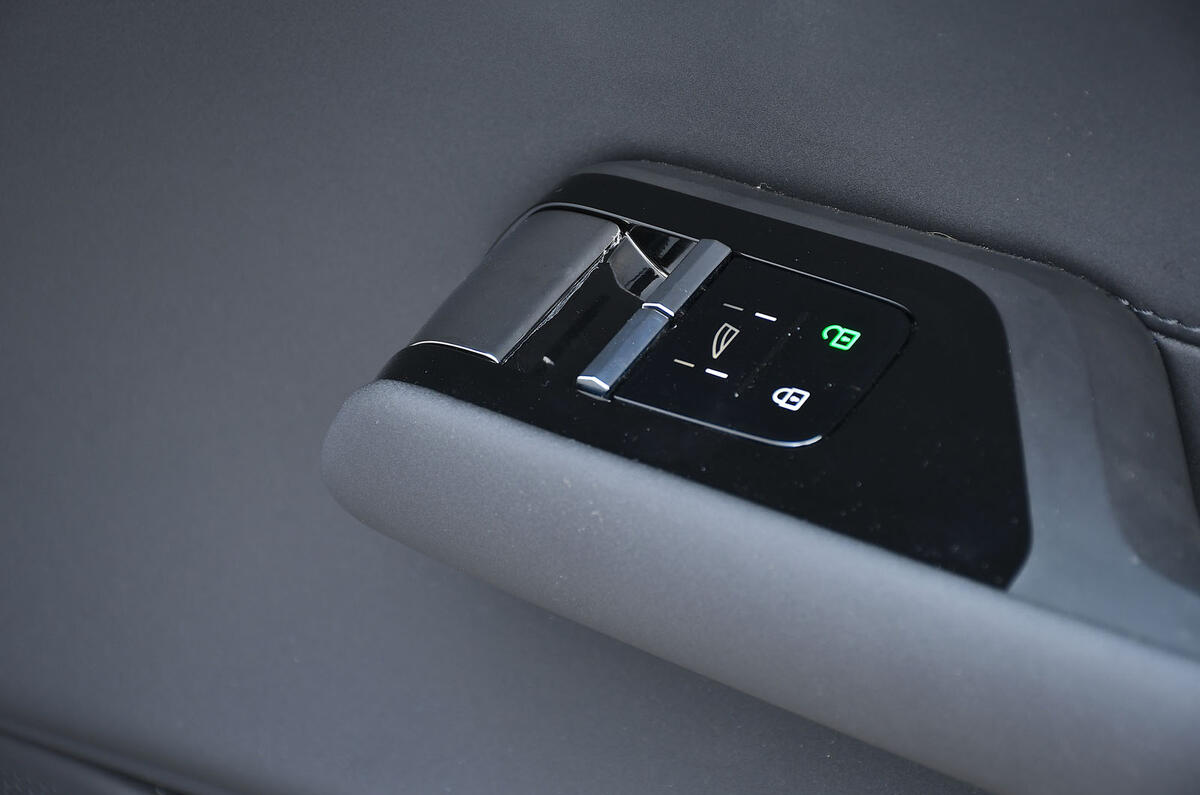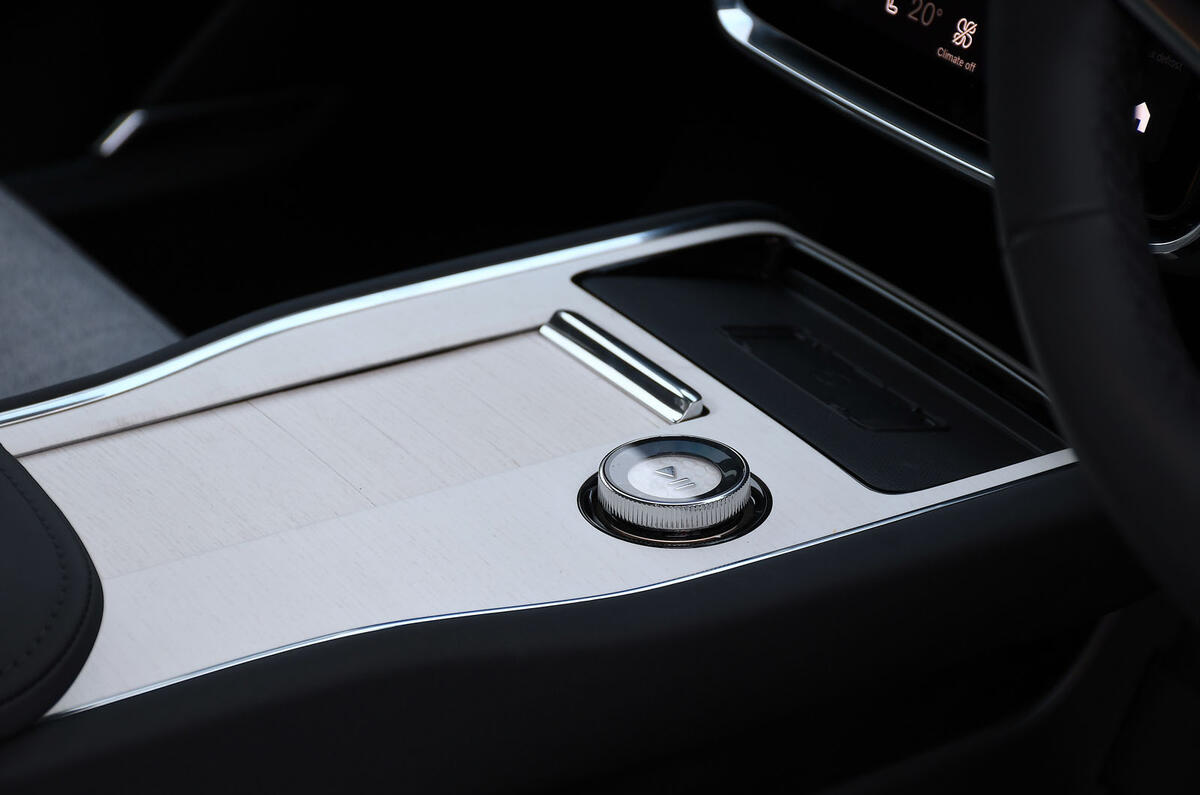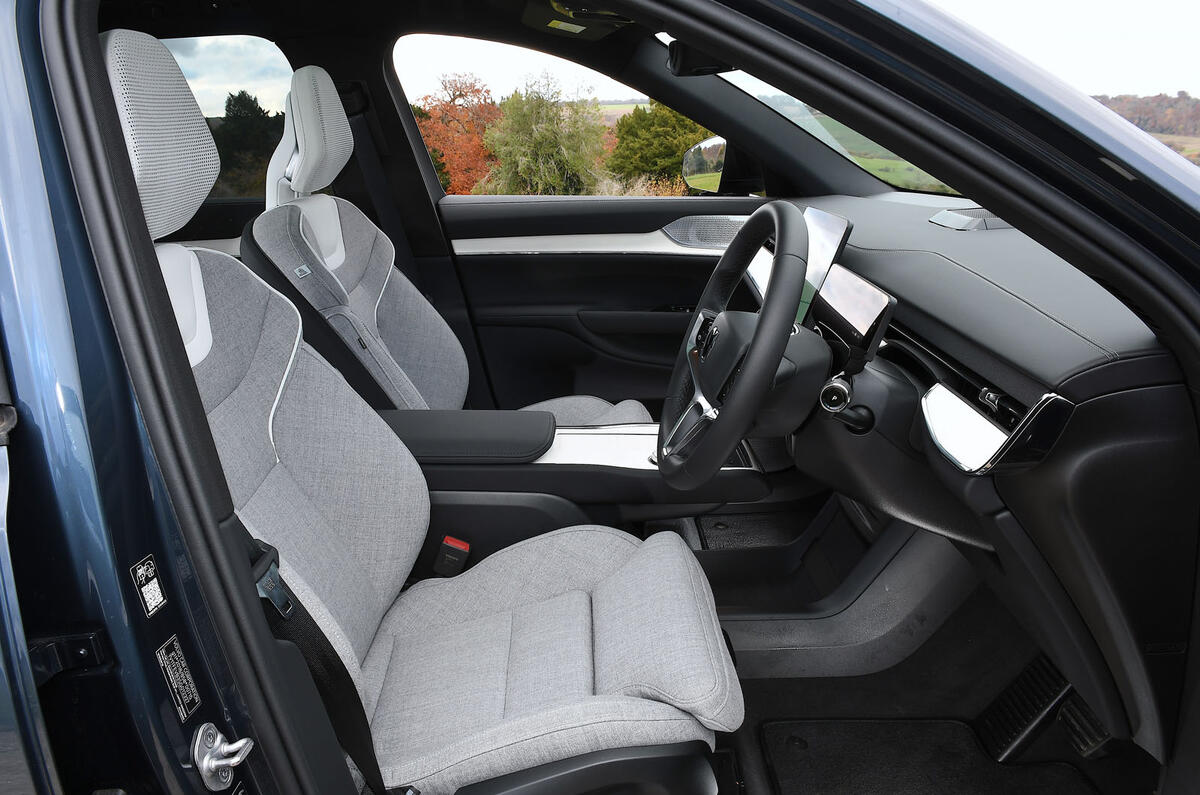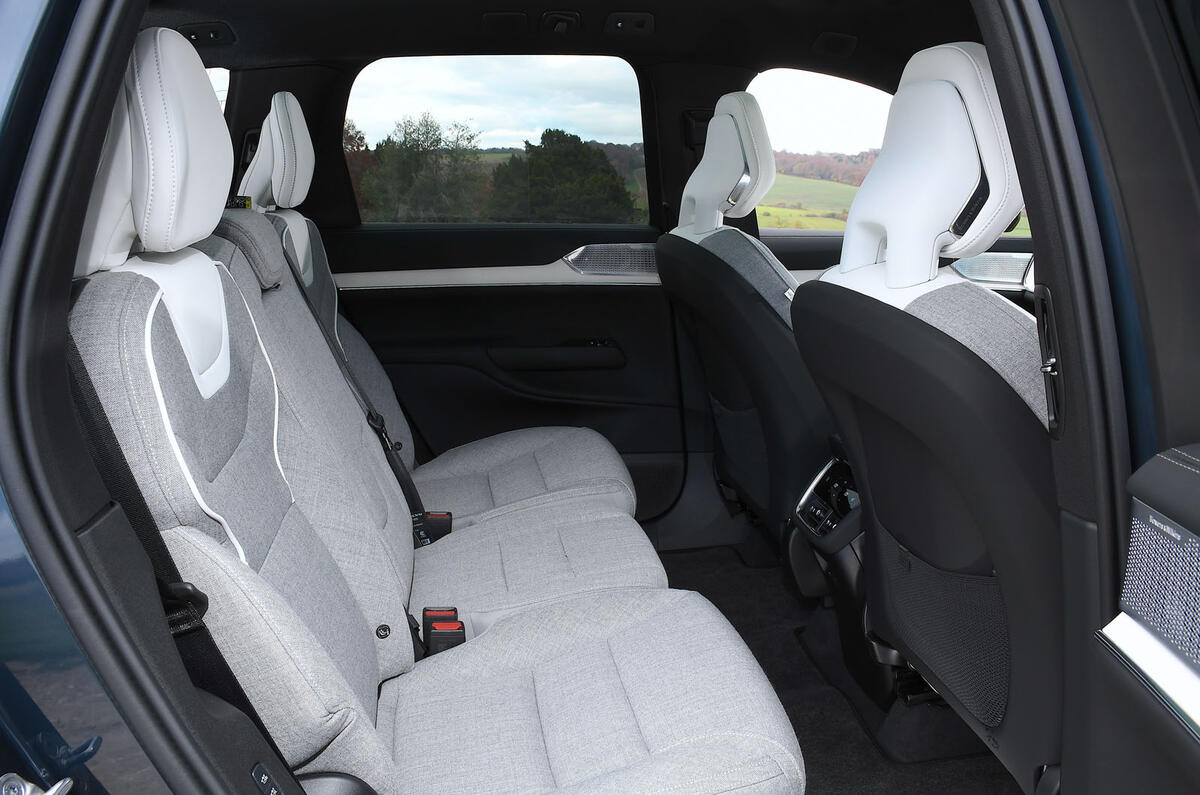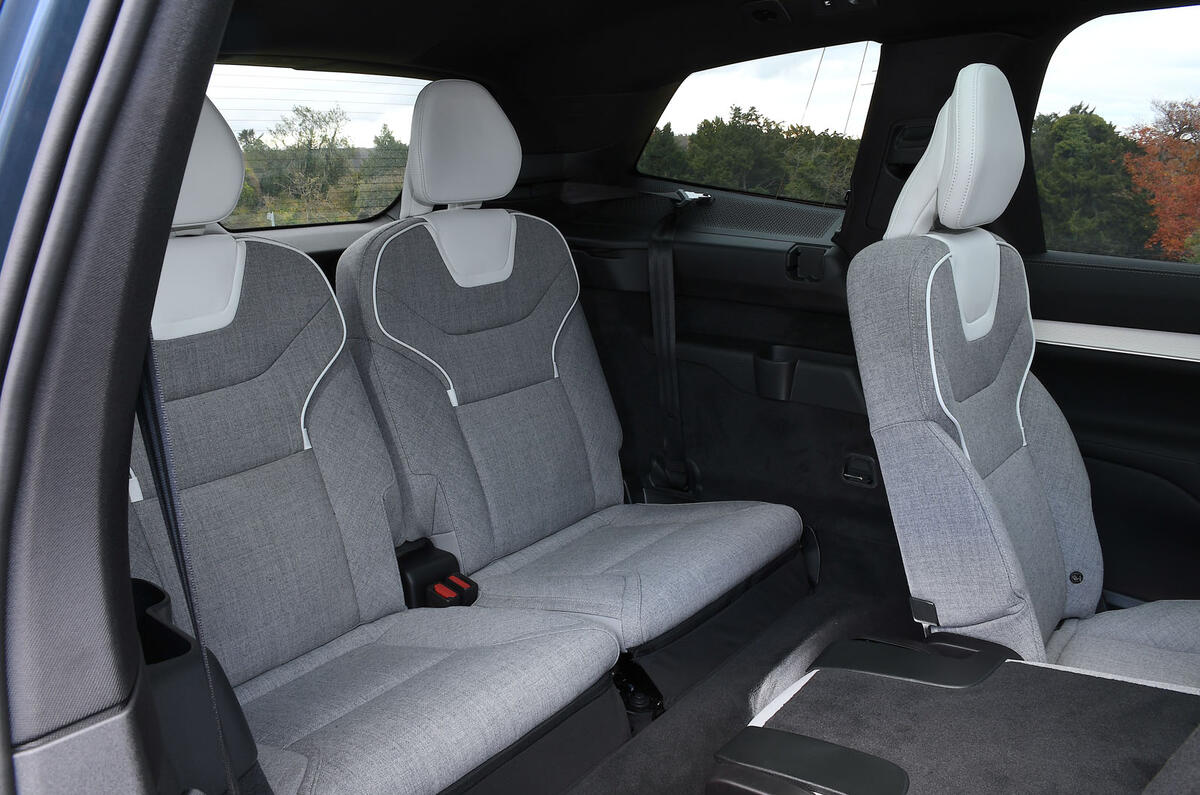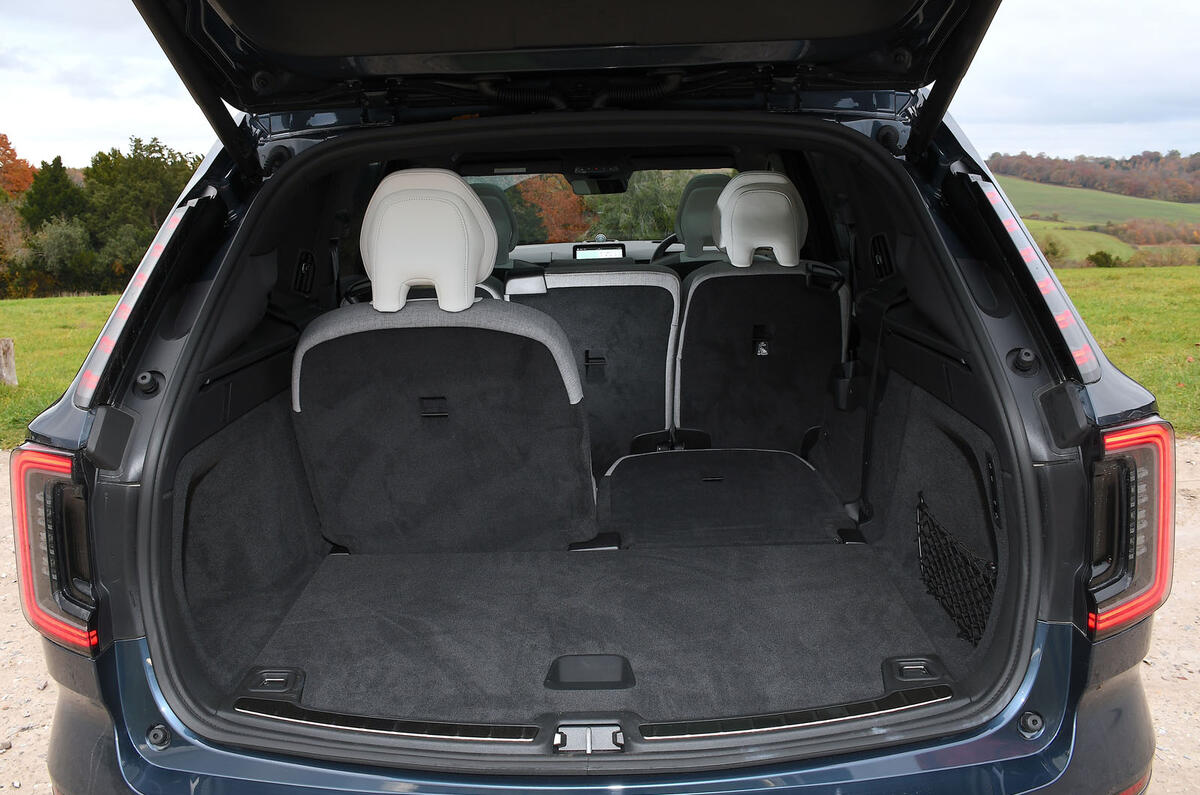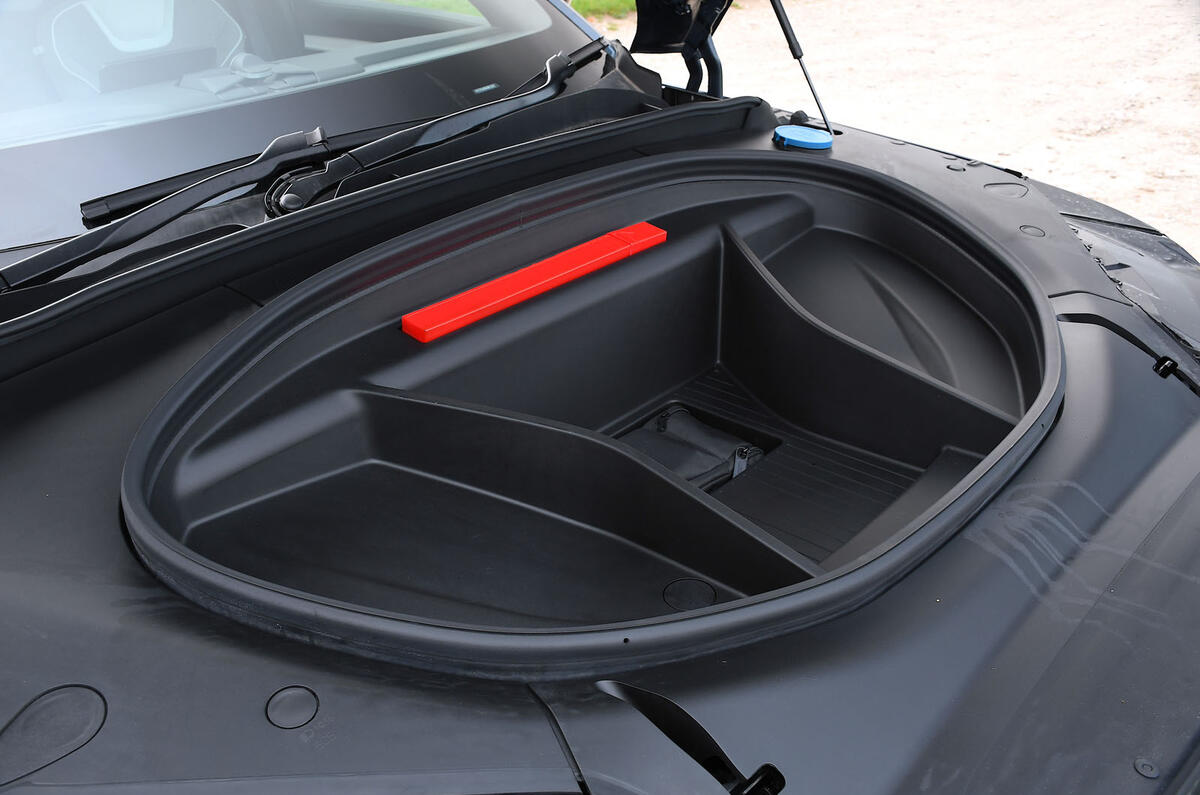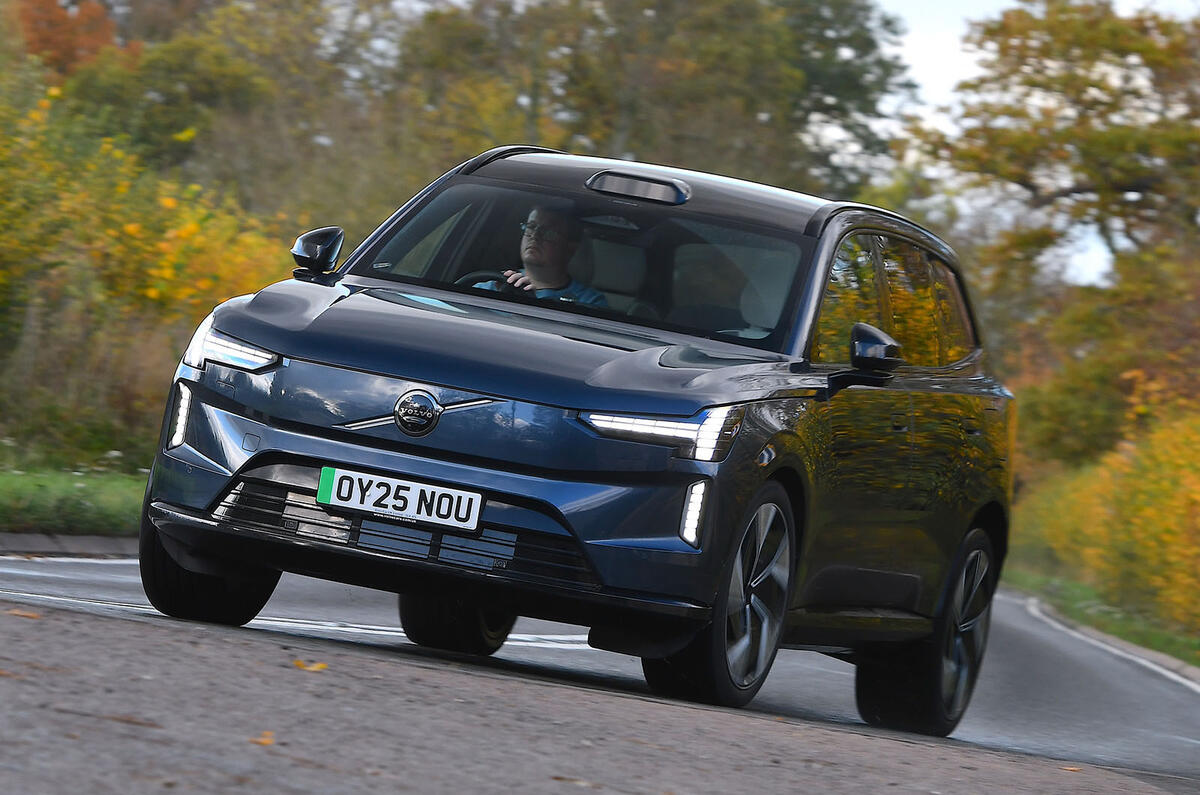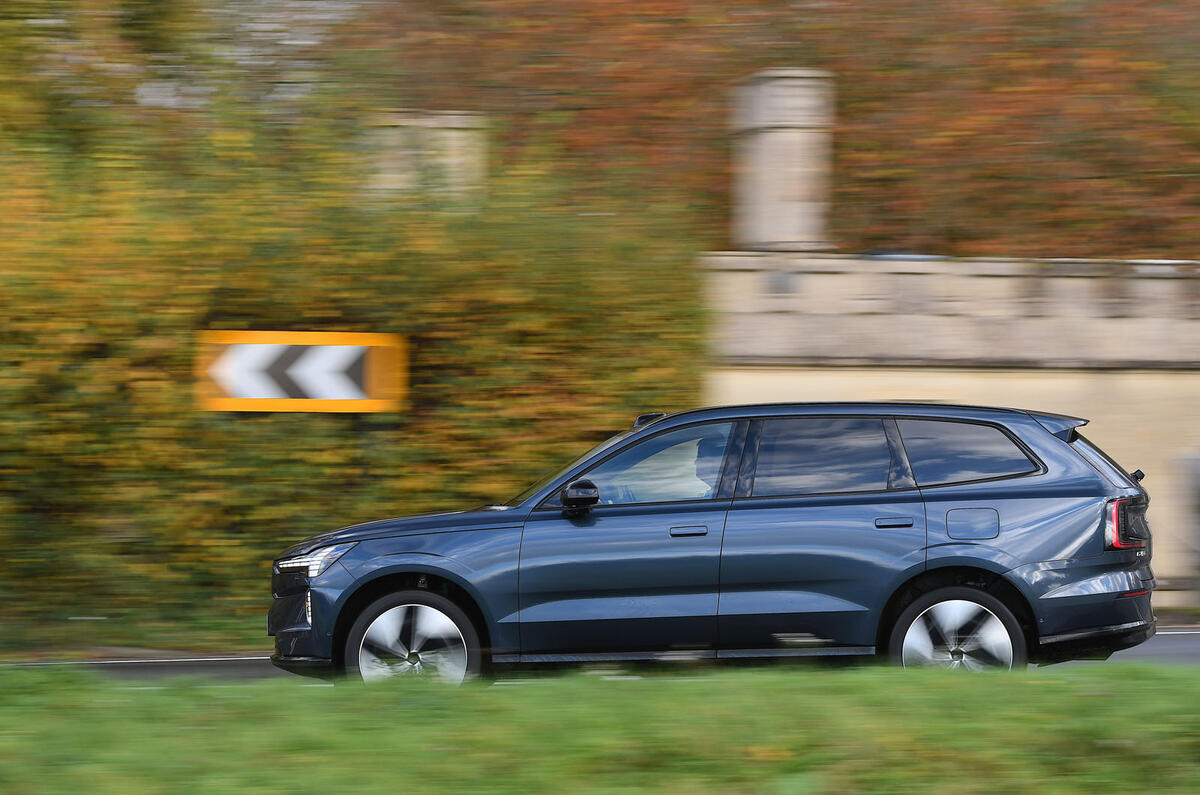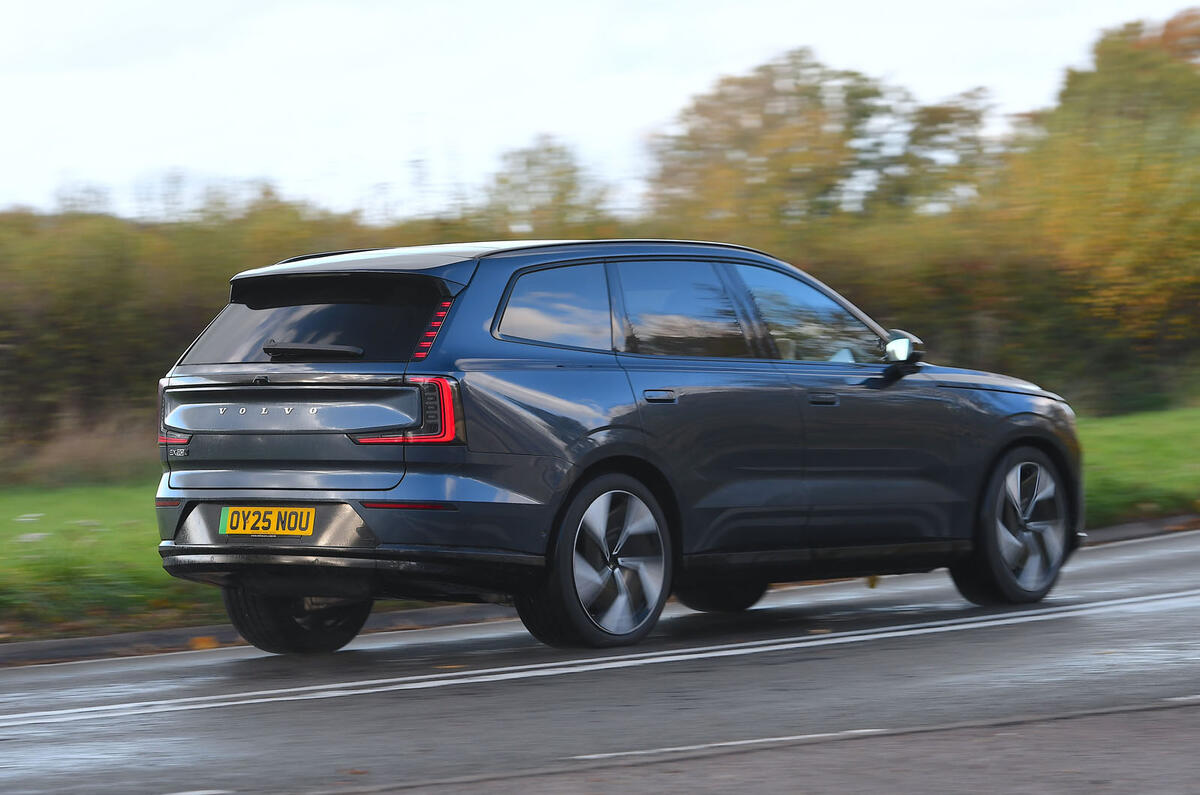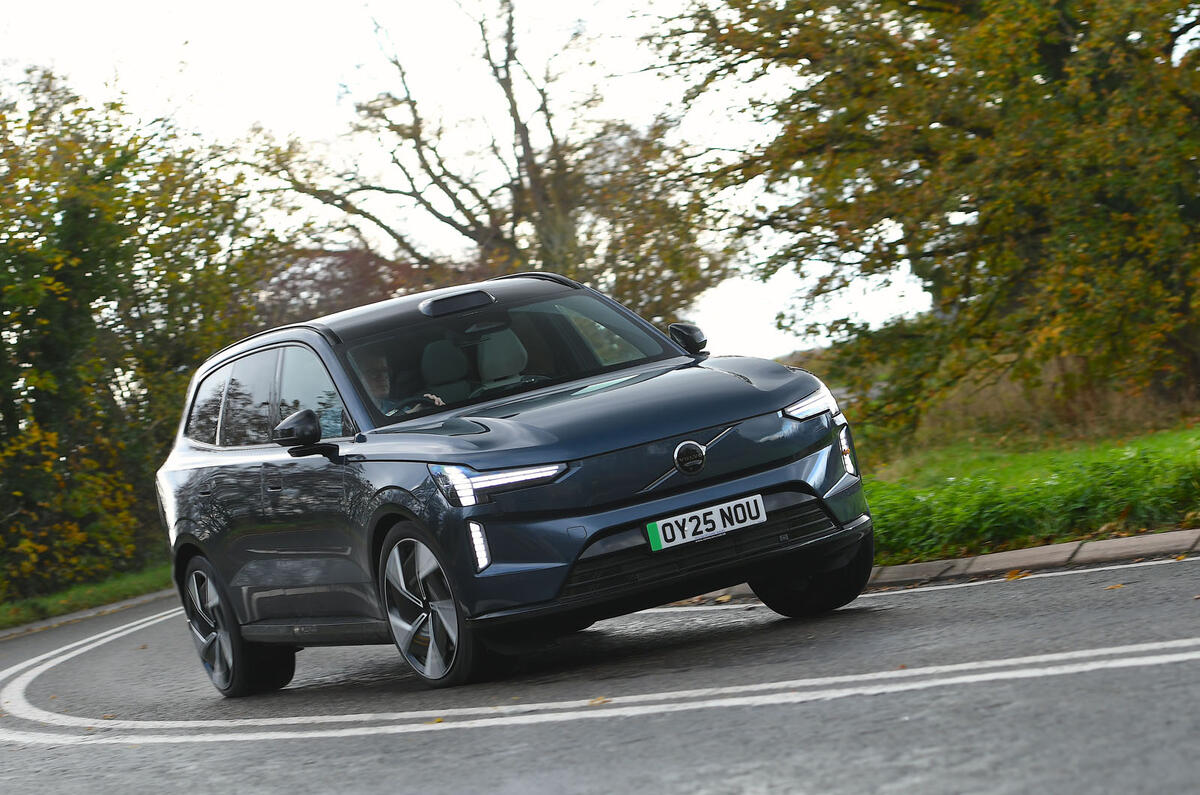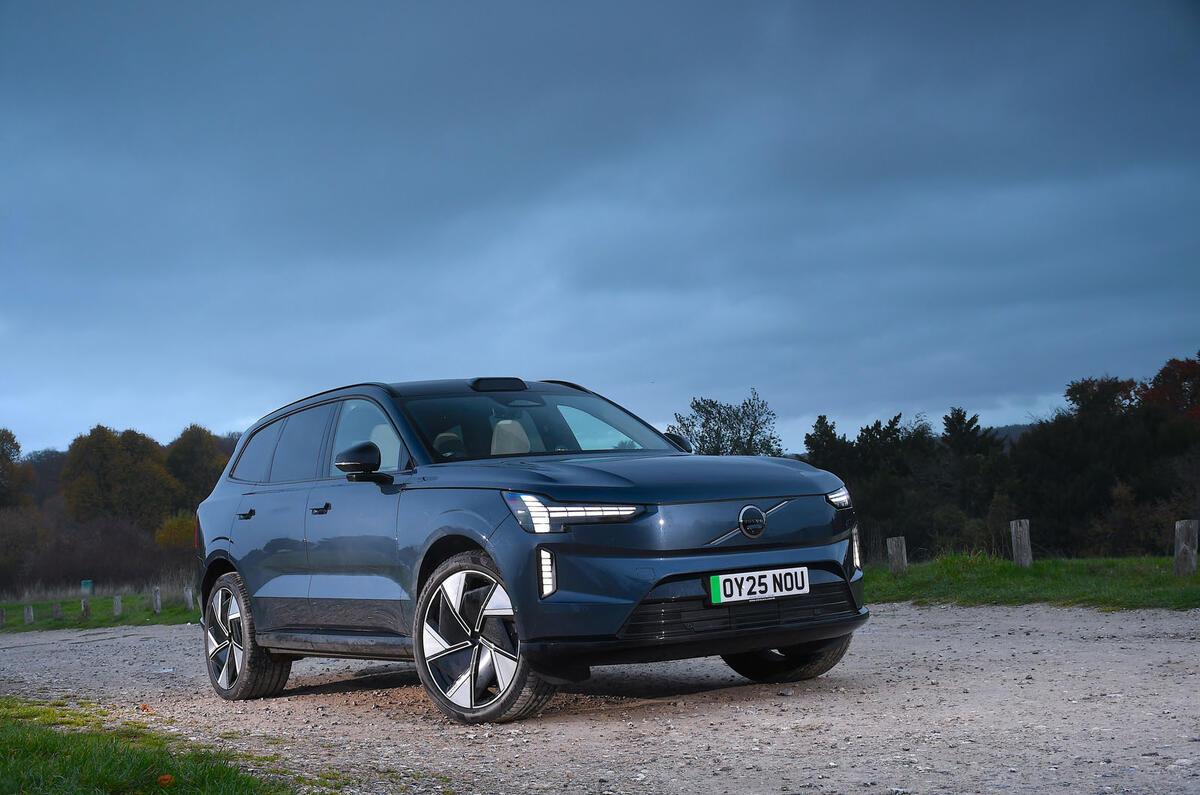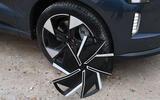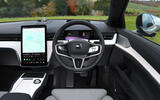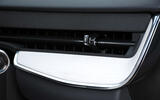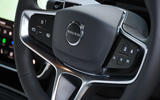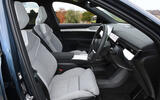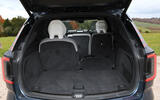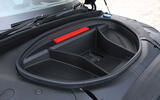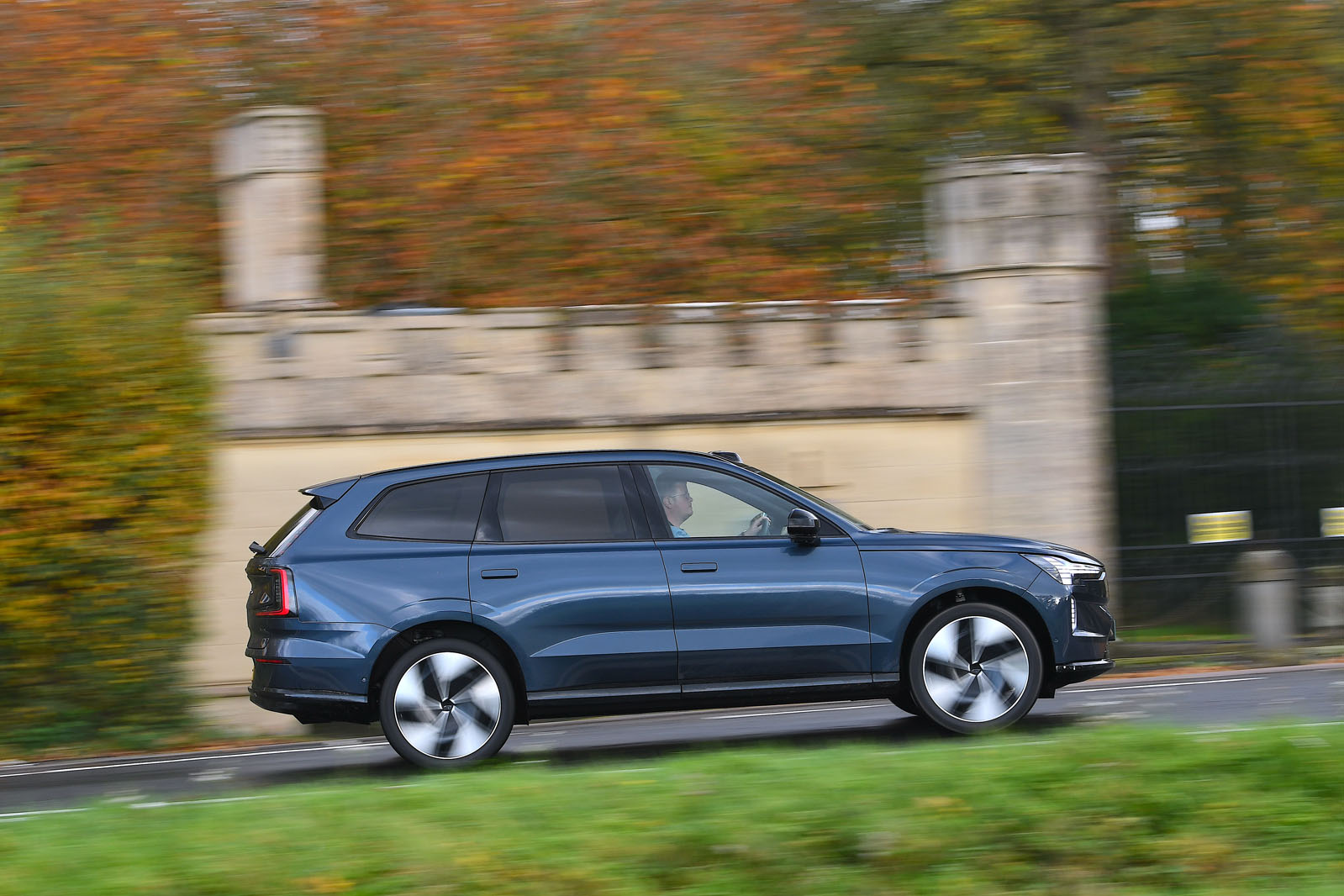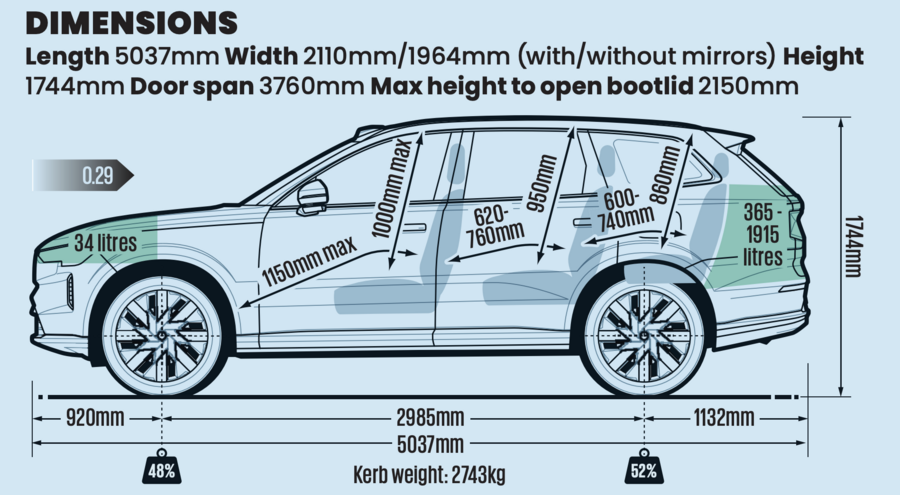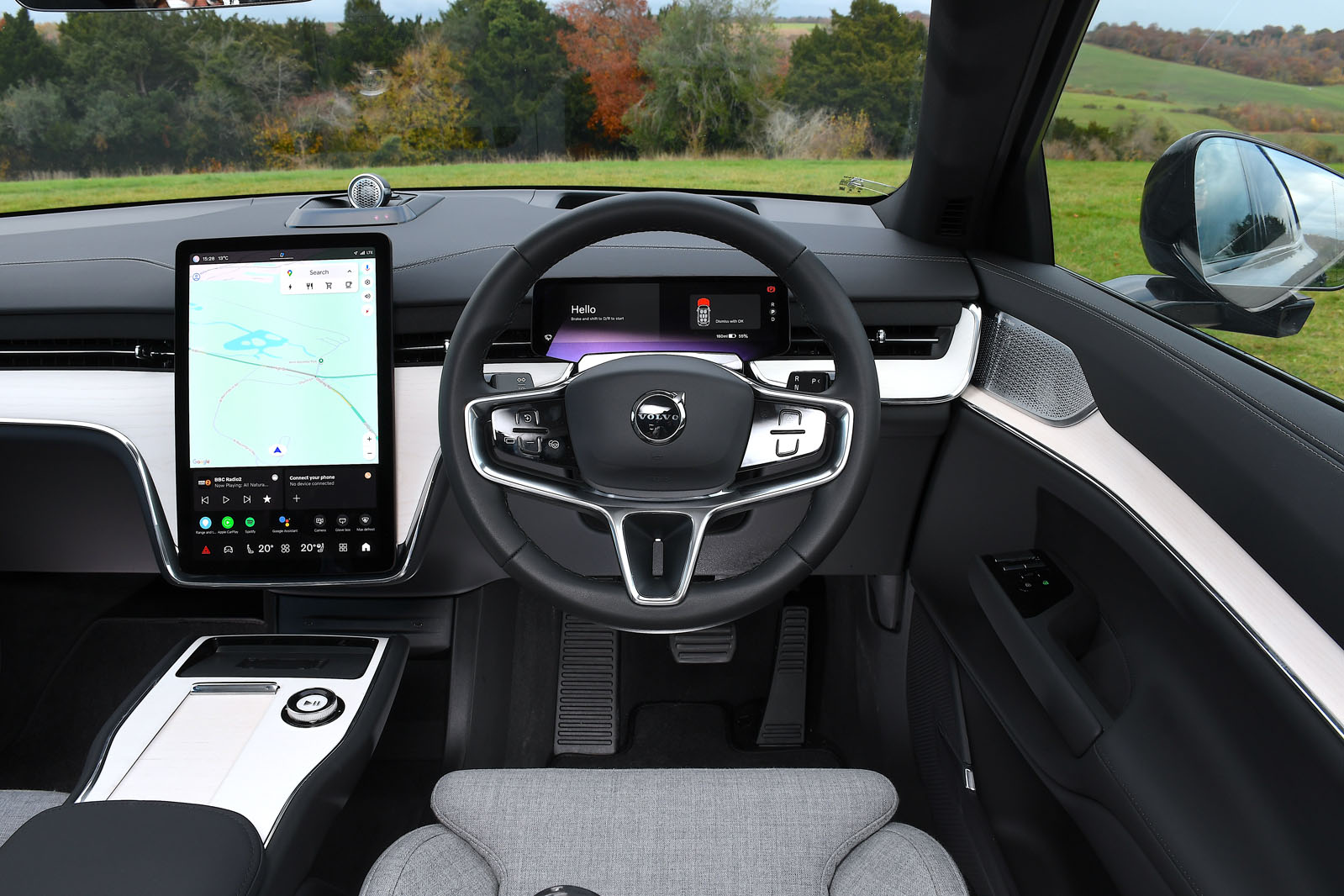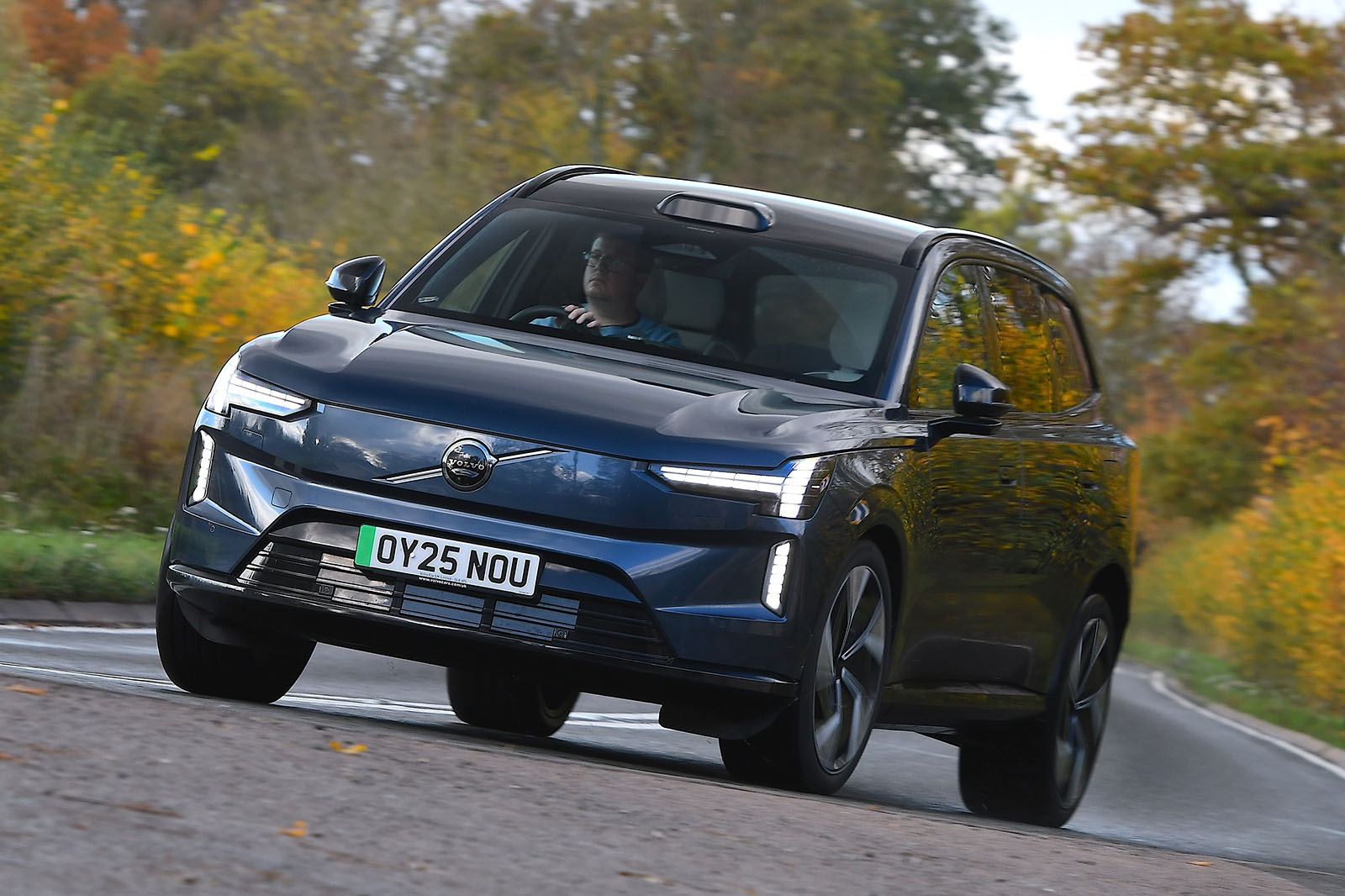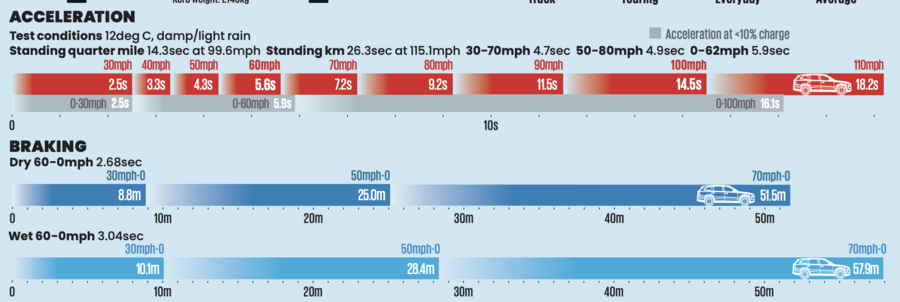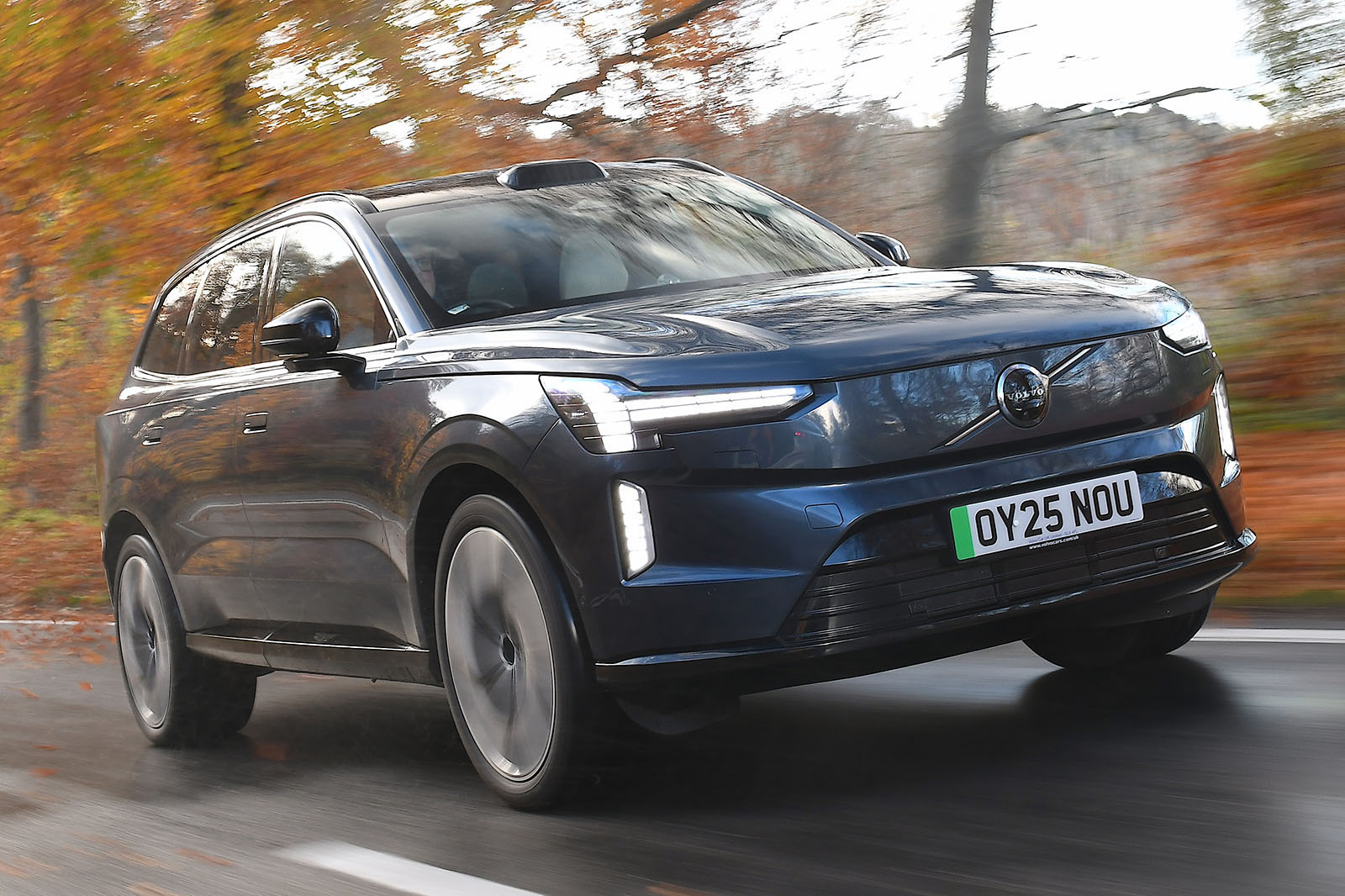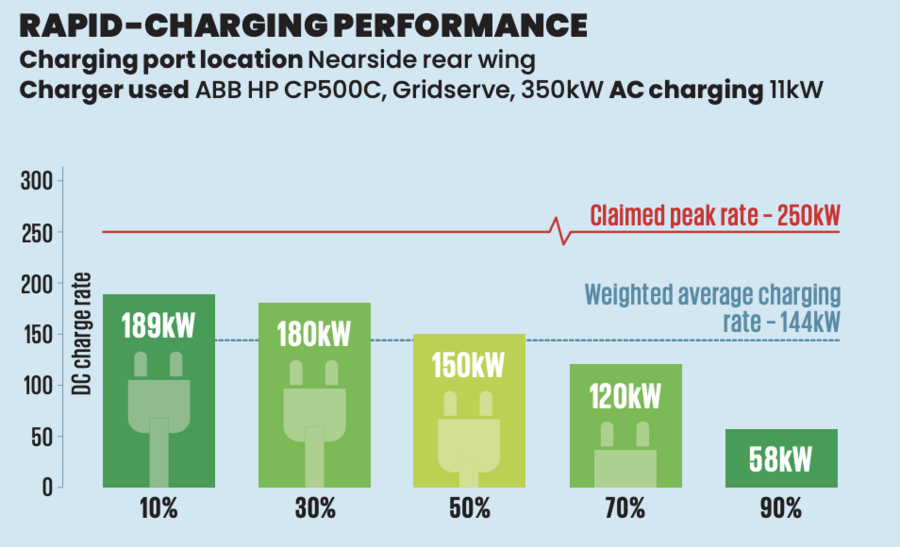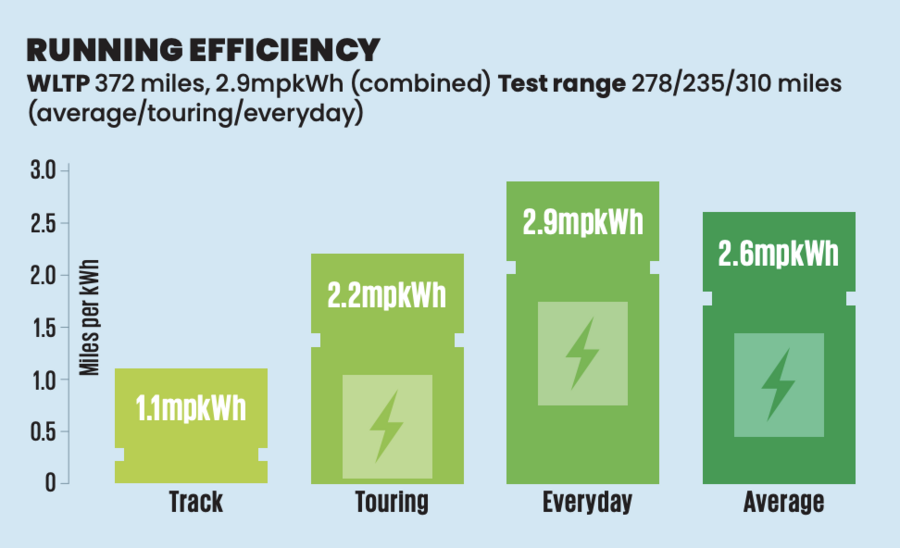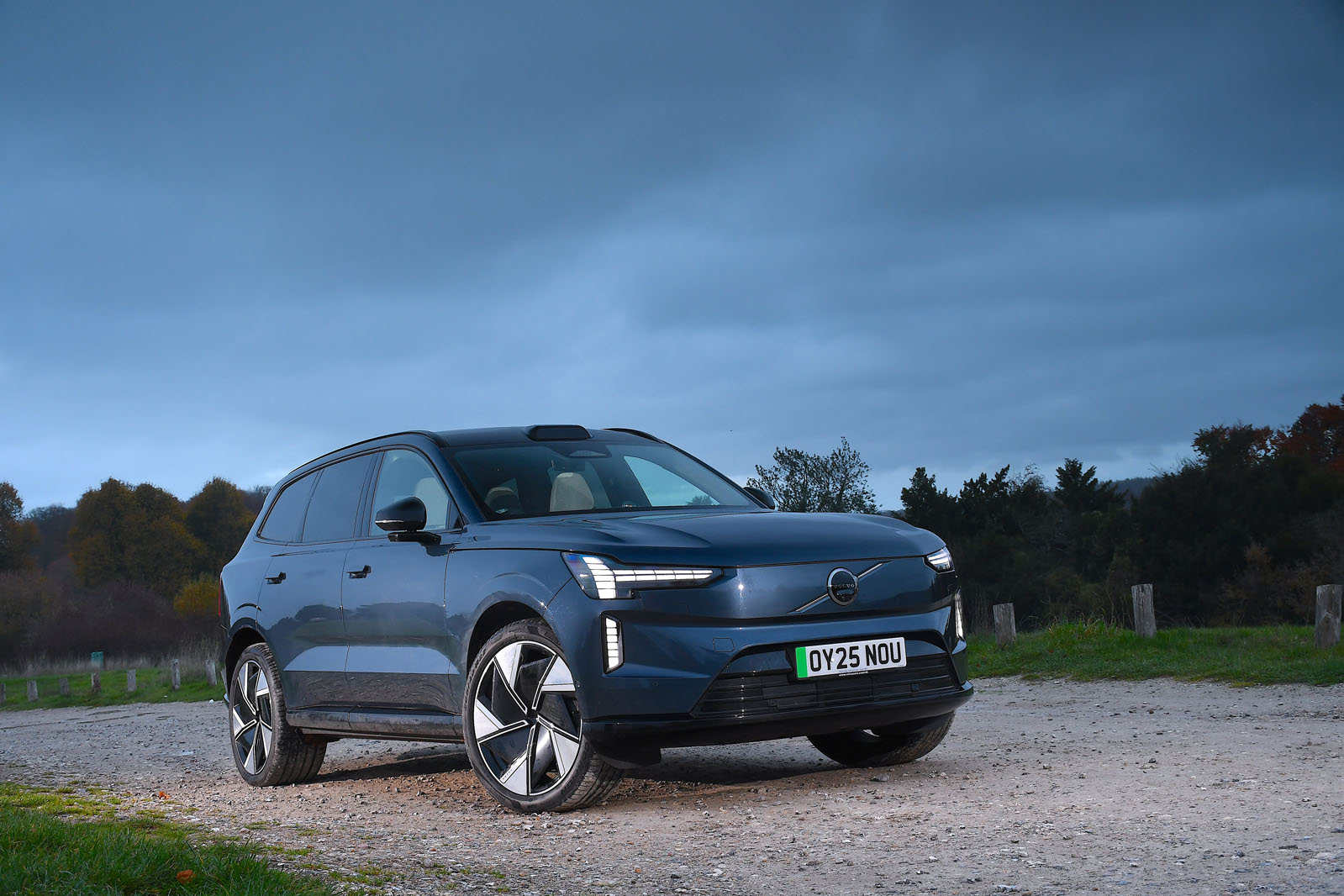The EX90’s interior is one of self-assured, lounge-like comfort and substantial tactile quality. It isn’t preoccupied with ‘wow’ factor. From its widely adjustable comfortable woollen seats, to its showpiece switchgear and useful storage, this is an enveloping, relaxing interior to be appreciated in the normal course of everyday life.
Unlike in the EX30, the driver finds both a decent-sized digital instrument panel and a head-up display ahead. The driving position is straight, and adjustable enough to feel either high and commanding or lower and more couched. Look around, though, and you will notice how many secondary physical controls (steering column adjusters, mirror controls etc) have been substituted by touchscreen controls.
The centre console offers cleverly-thought-out storage. The armrest cubby has a false floor with a rubber-matted ‘secret compartment’ underneath the main one, while an elastic retention strap stops smaller bags from rolling out of the lower-console storage area.
In the second row, Volvo’s woollen-blend upholstery continues the rich, informal vibe. Each of the three chairs here slides forwards and backwards individually by 140mm, and can recline by about 10deg. The outer ones have a particularly handy, one-touch fold function, and a separate forwards-tilt mechanism that makes access into row three easier than in most similar-size seven-seaters.
According to our tape measure, the car is only 10mm behind a BMW iX for outright second-row leg room when the seats are set at their rearmost. In the third row, space is tighter, but there is a little more for knees and feet than some seven-seat SUVs offer; we measured 20mm less leg room in the latest XC90. Even so, only small adults could travel back here happily. A Kia EV9’s back row is probably marginally more adult-appropriate.
The big boot has useful bits like hooks, straps and lights. The 570mm of loading length left when the third-row seats are in place is impressive enough itself (Hyundai Santa Fe: 380mm), but equally creditable is the depth of the available space, and its freedom from intrusion by the packaging of the rear drive motor.
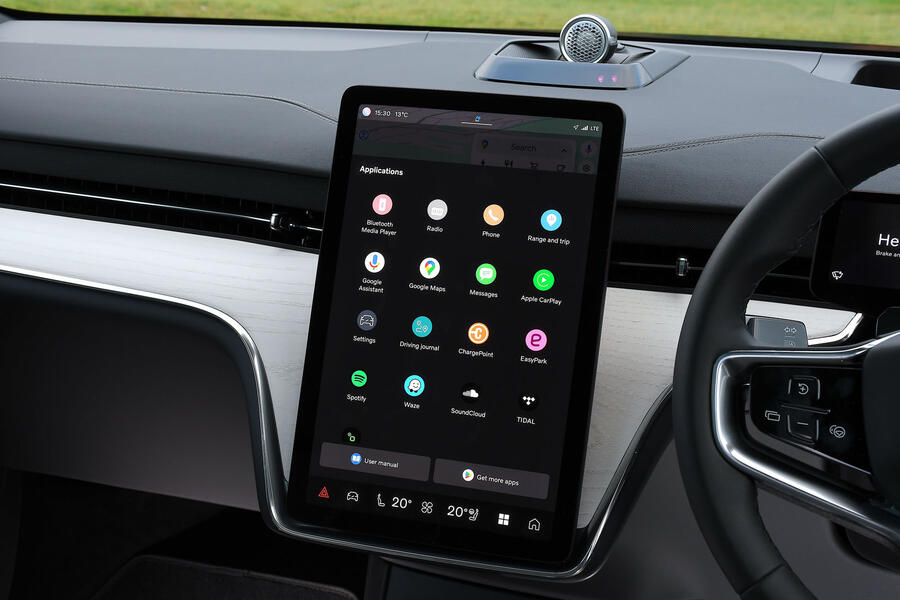
Multimedia - 3.5 stars
Volvo’s latest touchscreen multimedia systems have drawn criticism from Autocar’s testers over the past couple of years. This EX90 shows they are certainly improving in some respects.
Our test car’s set-up offered integrated Google app functionality and reliable Apple CarPlay device mirroring, and it made the latter easy to transfer in and out of via the ‘contextual’ nav bar in the bottom left corner of the screen, which also gave useful access to other frequently used menus. It would be better still if you could customise the whole of this nav bar directly, rather than relying on the AI to manage only half of it – and yet it works well enough.
There are still plenty of usability failings for Volvo to work out. Since you can only adjust the
door mirrors via the screen, the process of reversing through a tight garage door opening, for example, is maddeningly complicated for something you should be able to achieve by pressing one button. First: stop to go into park in order to cancel the reversing camera display; then, find the button several menus deep to fold the mirrors in; and then do it all over again 20 seconds later when you need to fold them back out again.



